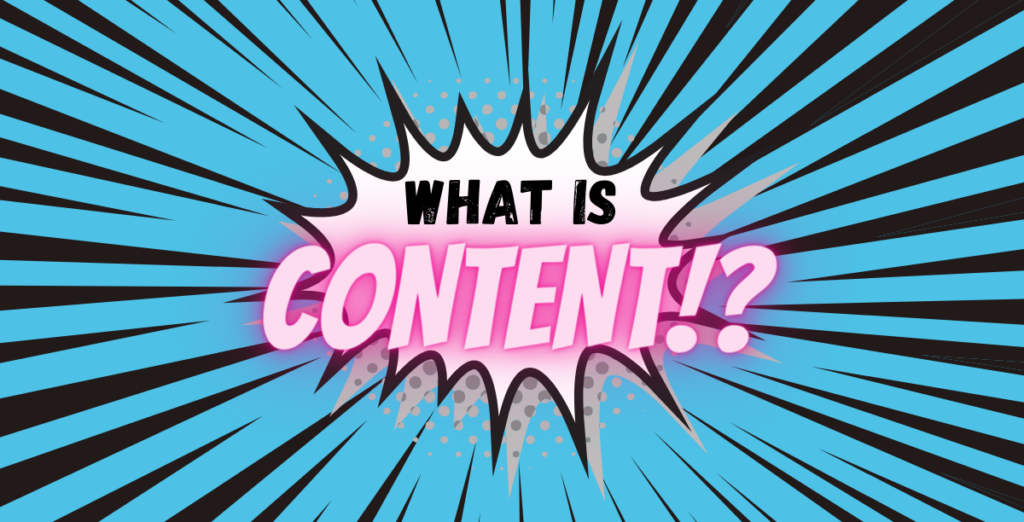We get this question all the time. What people really want to know, is what’s the difference between creative and content? While content teams and the idea of content marketing is becoming more and more prevalent, it’s still a new idea to a lot of folks. In the land of advertising and marketing agencies, most are familiar with creative departments and want to understand how creative and content play together. In this post, we’ll sort through the differences of content and creative, and a few examples of them at work. To be clear, we believe both are critically important, and when the two worlds collide truly incredible ideas come to life.
First, let’s clear up the difference between content and creative. Part of the confusion is that there isn’t a clear line between the two (and we don’t think there should be), and when both are done well, they blur together. But, for simplification let’s take the analogy of a book. The cover, is your “creative” department hard at work. Sorting out what language to use, images, graphics and design that would entice someone to pick it up and hopefully spend their hard earned dollars on it. Because no matter how many times they told us in grade school not to judge a book by its cover, we definitely do as it’s one of the most important influences on whether or not a book sells. The guts of the book, everything between the front and back cover, that’s the content. Content is the deliverable of value. While the cover (creative) grabbed the attention of the reader, the purchaser is counting on the content to be good. Below are some examples of content.
- Blog post (like this one)
- Podcast
- Television show
- Radio segment
- Article in a magazine
- Tutorial on YouTube
- Comics
- Books
- Music
- Art
- Poetry
- News
- Downloadable PDFs
The list could go on and on… but what is the purpose of content? The goal of any piece of content is to provide value to the end user. An even more simple way of thinking about this, is that it should be helpful. Helpful can be entertainment, inspiration, raw data, tutorials, information, or fulfill any other myriad of needs a consumer might have. Think about it. In the times of COVID, would you say Netflix is helpful? We can escape into the stories of characters we love which can be entertaining, therapeutic, educational, whatever you need it to be as the end user. Many of us wouldn’t dream of canceling our favorite streaming service, especially with the cold winter months quickly approaching, and your streaming service of choice is usually determined by how much you enjoy the content on that platform.
Creative is the packaging. It’s the sharp looking cover that sells the book. It’s the engaging music that pulls you into the podcast, it’s the beautifully shot cinematic quality of your favorite films. Historically, creative departments have (and continue to be) tasked with beautifying a product, service, or message. To be fair, the message also often falls into the hands of brilliantly talented copywriters. To be clear, we believe deeply in creatives and creative departments. Without them content falls flat or collects dust on the proverbial shelf. The real magic is when creative and content are married in strategy and direction. The result of which can be a powerful content marketing strategy.
While the concept of content marketing is gaining in popularity, it’s far from new. Content marketing has been around over 300 years and can be traced all the way back to founding father Benjamin Franklin. Franklin published Poor Richard’s Almanack in 1732 and leveraged the popular and engaging content to market his printing business. The goal of content in a marketing strategy is to come full circle, drawing in an audience, and then continuing to serve and delight them with more content which in some case may lead to a CTA (call to action) to purchase something or exchange something of value (like the follower’s name and email). Content marketing can play an important role in a sales cycle, brand awareness, brand engagement, or positioning a person or brand as an expert on a subject.
The beauty of this is that humanity is incredibly diverse, especially in our wants and needs. Likewise, what’s valuable to you, may not be valuable to me and vice versa. When we think about content in the context of marketing and advertising, the third and most important piece of the pie becomes ensuring that you get your content in front of the right audience. That becomes the job of media strategists, getting your content in front of the right people to increase engagement.
That’s a topic for a whole other blog post though, stay tuned.





